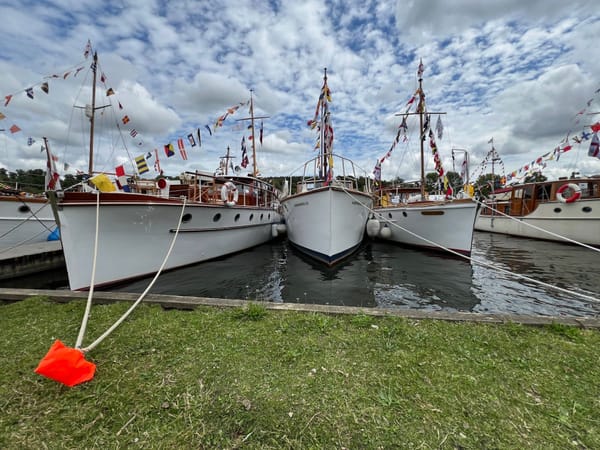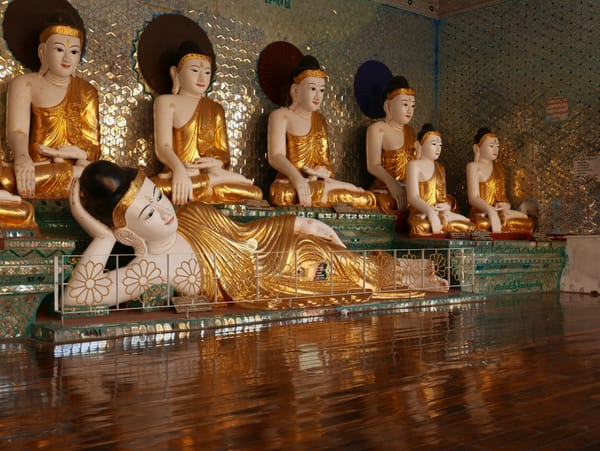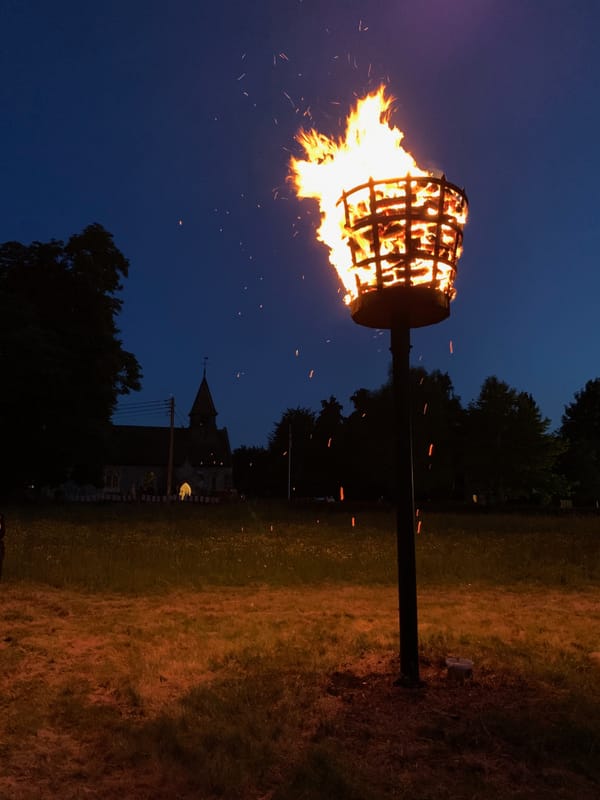Malaysia — Hill Top Travel and Tour — BOH Sungei Palas Tea Centre, Cameron Highlands, Malaysia
How to make a perfect cup of tea
August 2015
As part of the Hill Top Travel Tour, we visited the BOH Sungei Palas Tea Centre, which was very interesting.
I have been drinking tea for decades (well, I’m British; what would you expect?). And in the two and a half years I lived in Malaysia, I drank BOH tea, so it was nice to come and see where and how the tea was made.
I was very ignorant of the tea manufacturing process. If asked, all I would have been able to say was that tea was made from a leaf that grew on a bush. That was it — my total knowledge of the subject.
On my visit to the BOH Sungei Palas Tea Centre, I discovered that there are six stages to making the perfect cup of tea. And these six stages occur even before we get to warming the pot or discussing whether it is milk first.
Stage 1: Picking the leaves
The first stage of the process is to pick the leaves. The picking can be done by hand or with a set of shears.
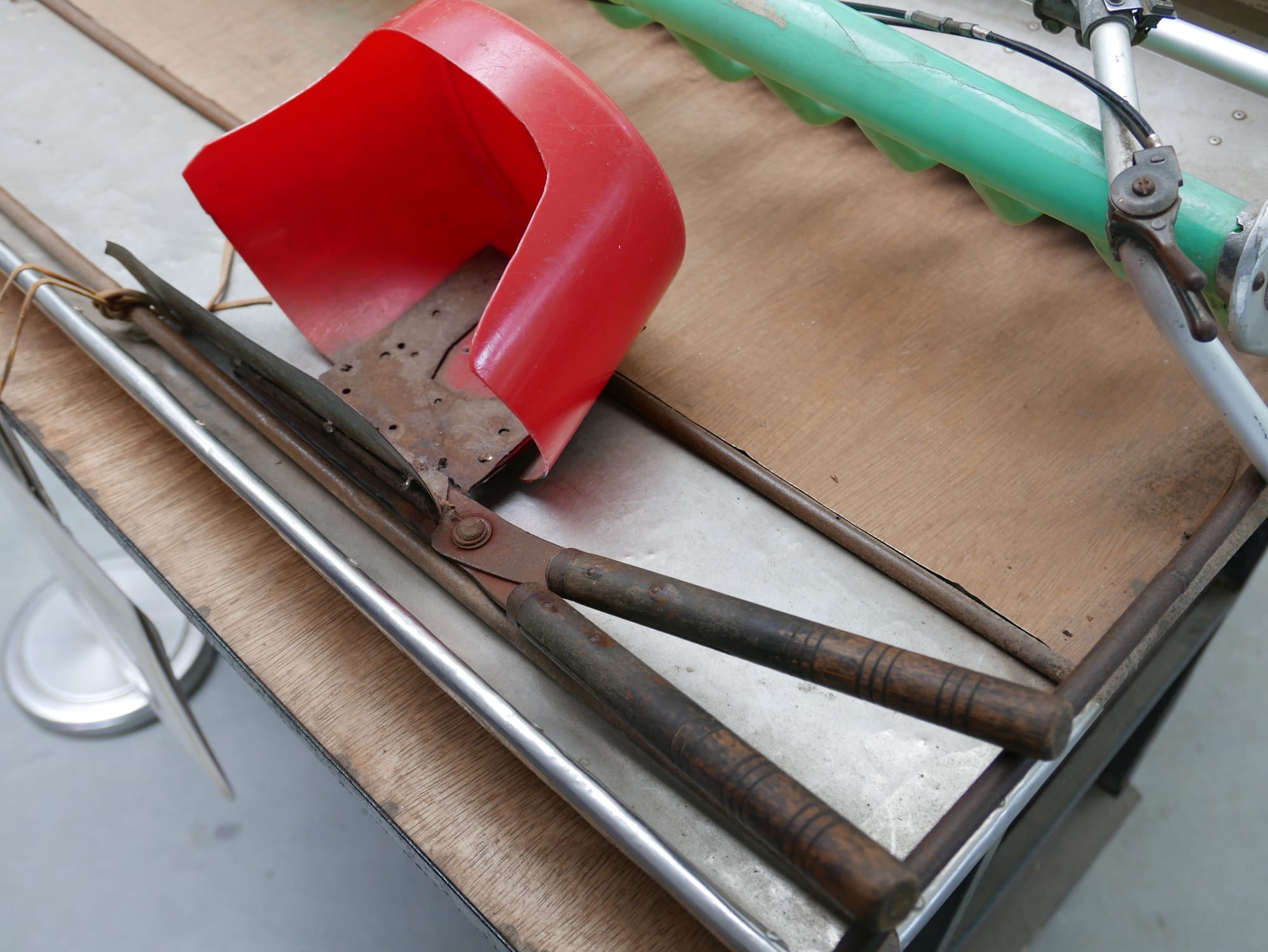
Alternatively, two people using a ‘state of the art’ picker (below) can harvest the tea.
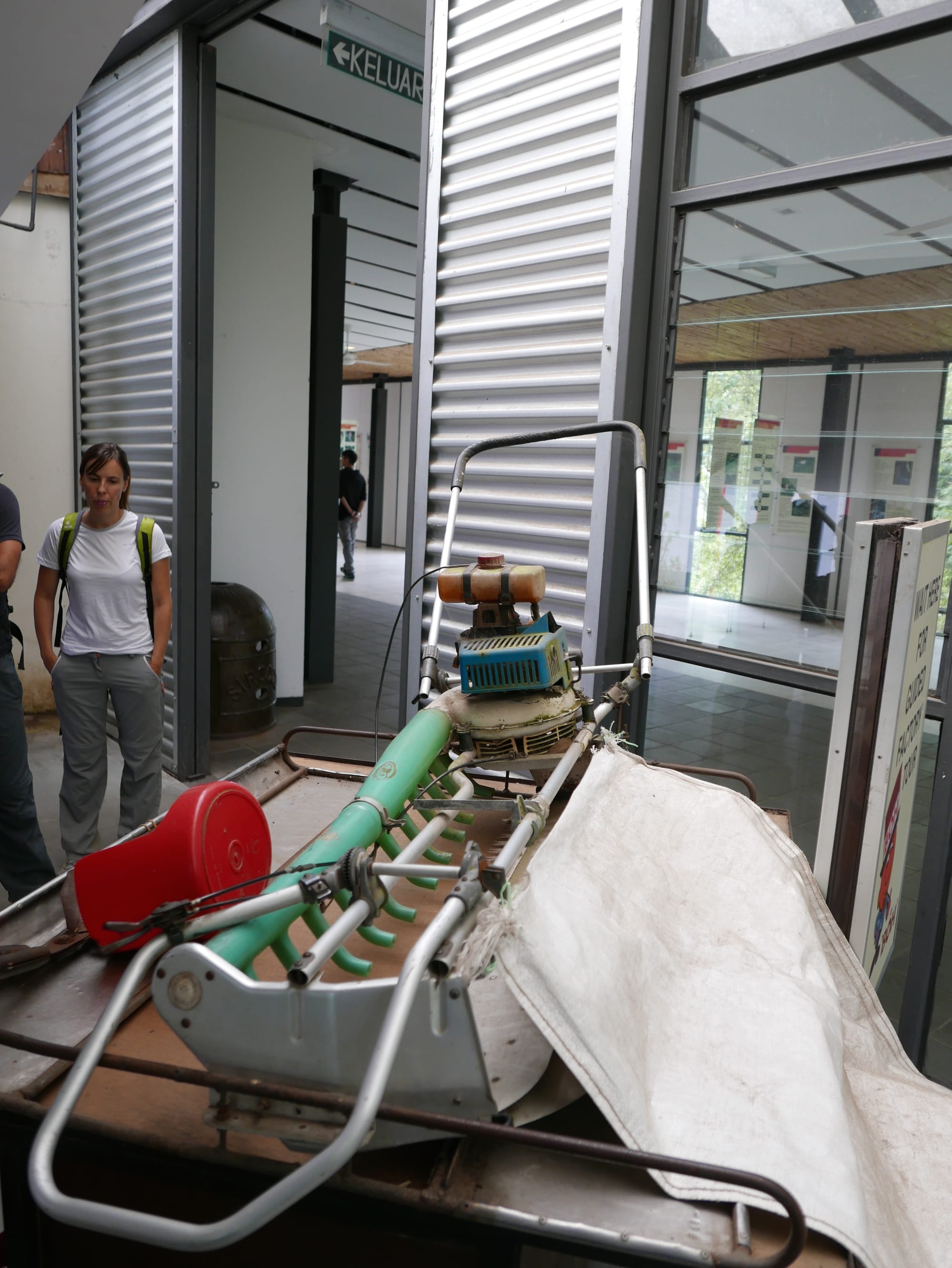
No matter how you look at it, the methods of picking tea are primitive, and there appears to be no automation.
Next, we get to processing the freshly picked leaves.
Stage 2: Withering:
In this stage, the fresh-cut leaves are spread out into trays or troughs for drying. The trays or troughs have perforated beds through which powerful fans blow air through the leaves. The withering process is complete once the leaves have lost 40–50% of their water content and have taken on a flaccid (floppy) appearance. This process also starts a series of chemical changes in the leaves, which gives them the final flavour. The process is usually carried out overnight.
Stage 3: Rolling:
The following day, the withered leaves are rolled. This process breaks open the leaves’ cells and releases the juices required for fermentation.
Stage 4: Fermentation:
The fermentation step is actually oxidation. During this process, the enzymes in the leaves are exposed to oxygen, and the juices ferment. The broken (rolled) leaves are spread out onto trays. The fermentation process takes 90–120 minutes and is complete once the green leaves turn coppery. This is a critical stage of the manufacturing process as it is during this step that the characteristic flavours and aroma of the tea develop; hence the process has to be carefully controlled.
Stage 5: Drying:
After fermentation, the leaves are dried for around 30 minutes using hot air (up to 100 ºC). The drying process halts fermentation, and the leaves will have their moisture content reduced to about 3% of the original level. The fermented juices from the previous step crystallise, and it is these that are released when the tea is finally made for drinking.
Stage 6: Sorting:
The final stage is sorting. During this stage, any stalks and fibres are removed, and the tea is sorted by leaf (particle) size using a series of vibrating sieves. The different size leaf particles will produce teas with different aromas and tastes.
I found the tea plantation very interesting (I learnt a lot), and I also found the fields of tea strangely relaxing — I don’t know why.
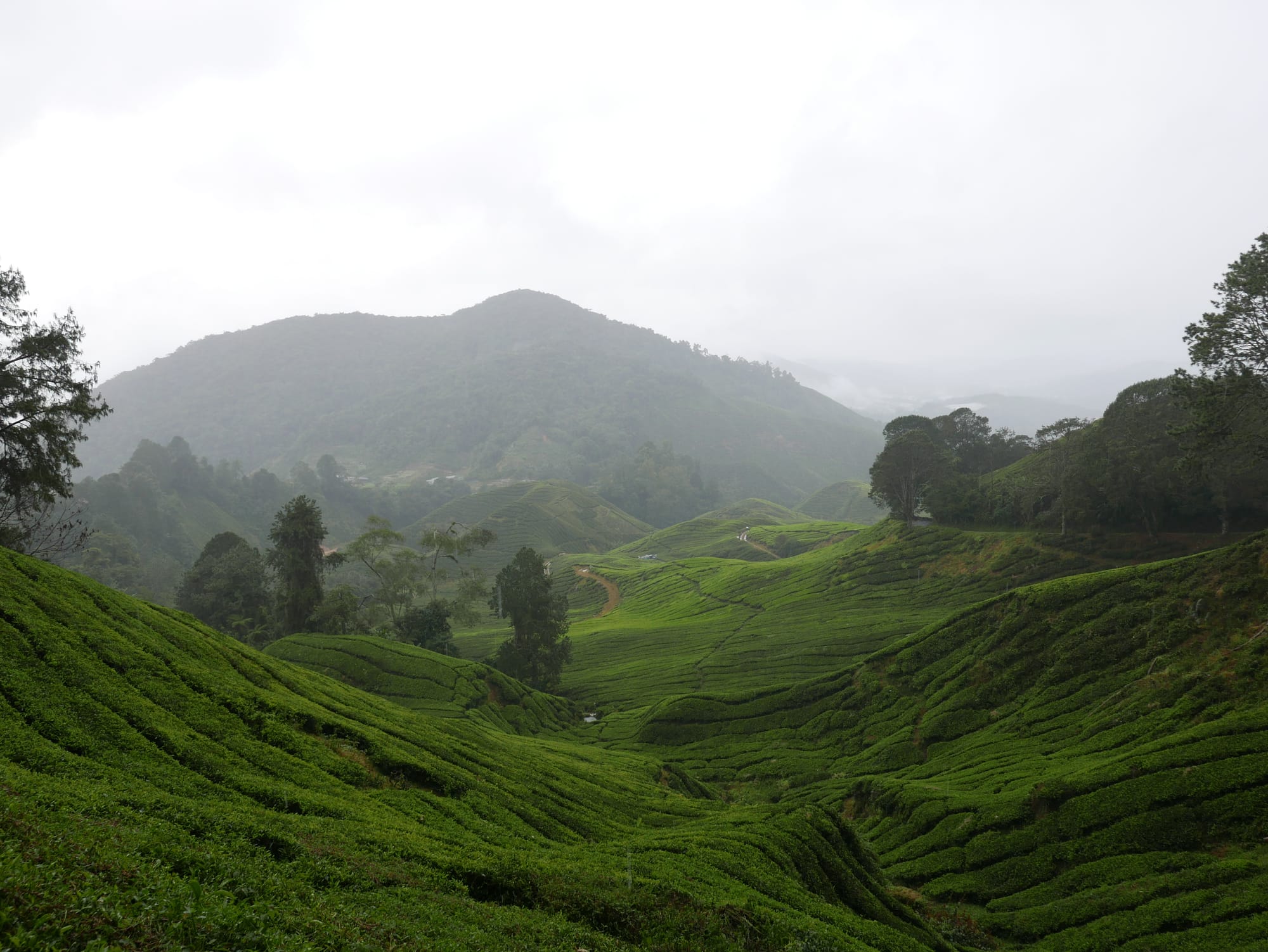
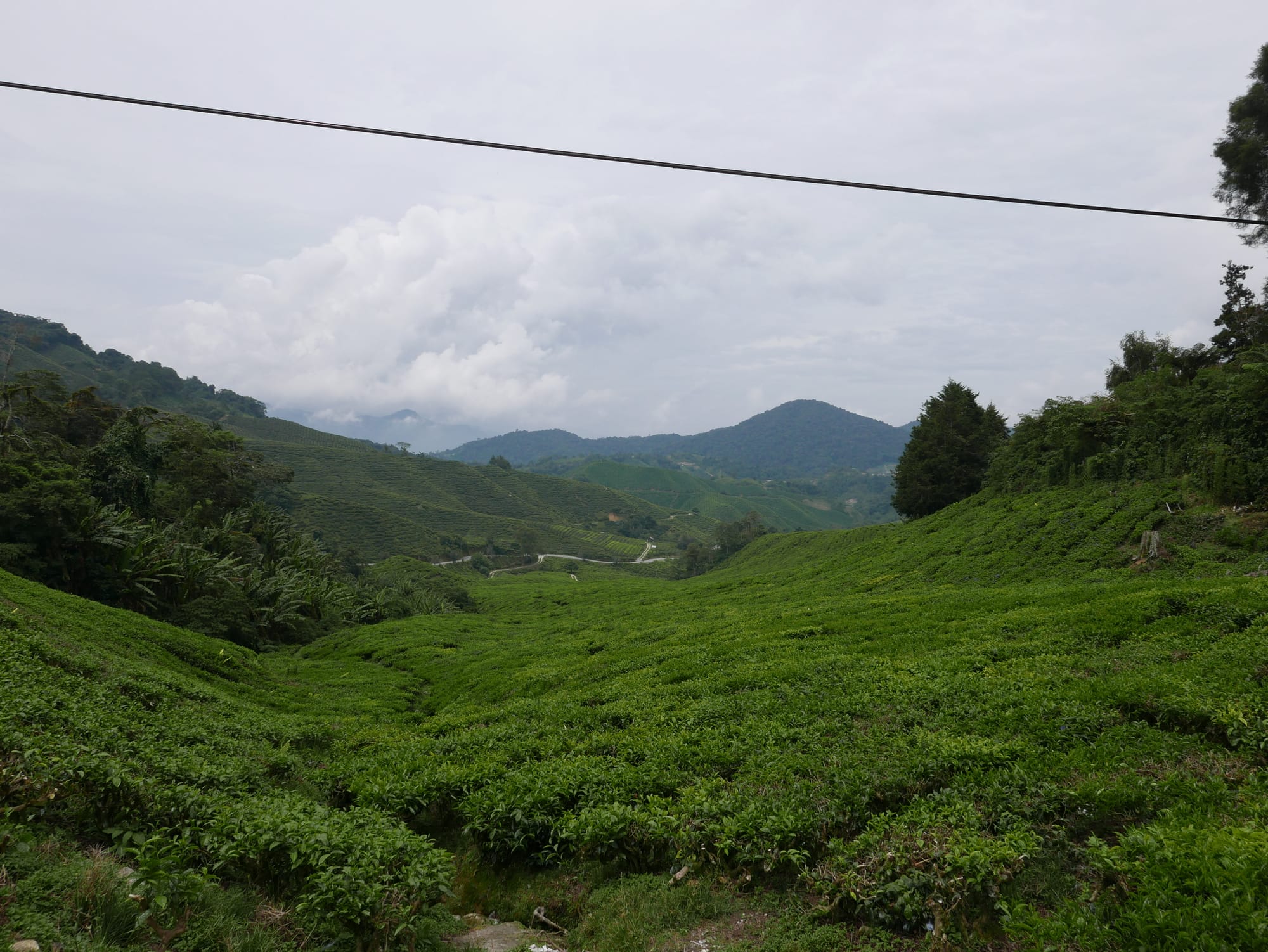
Maybe I found the fields relaxing because of all the neatly trimmed bushes and the shapes they formed in the landscape.
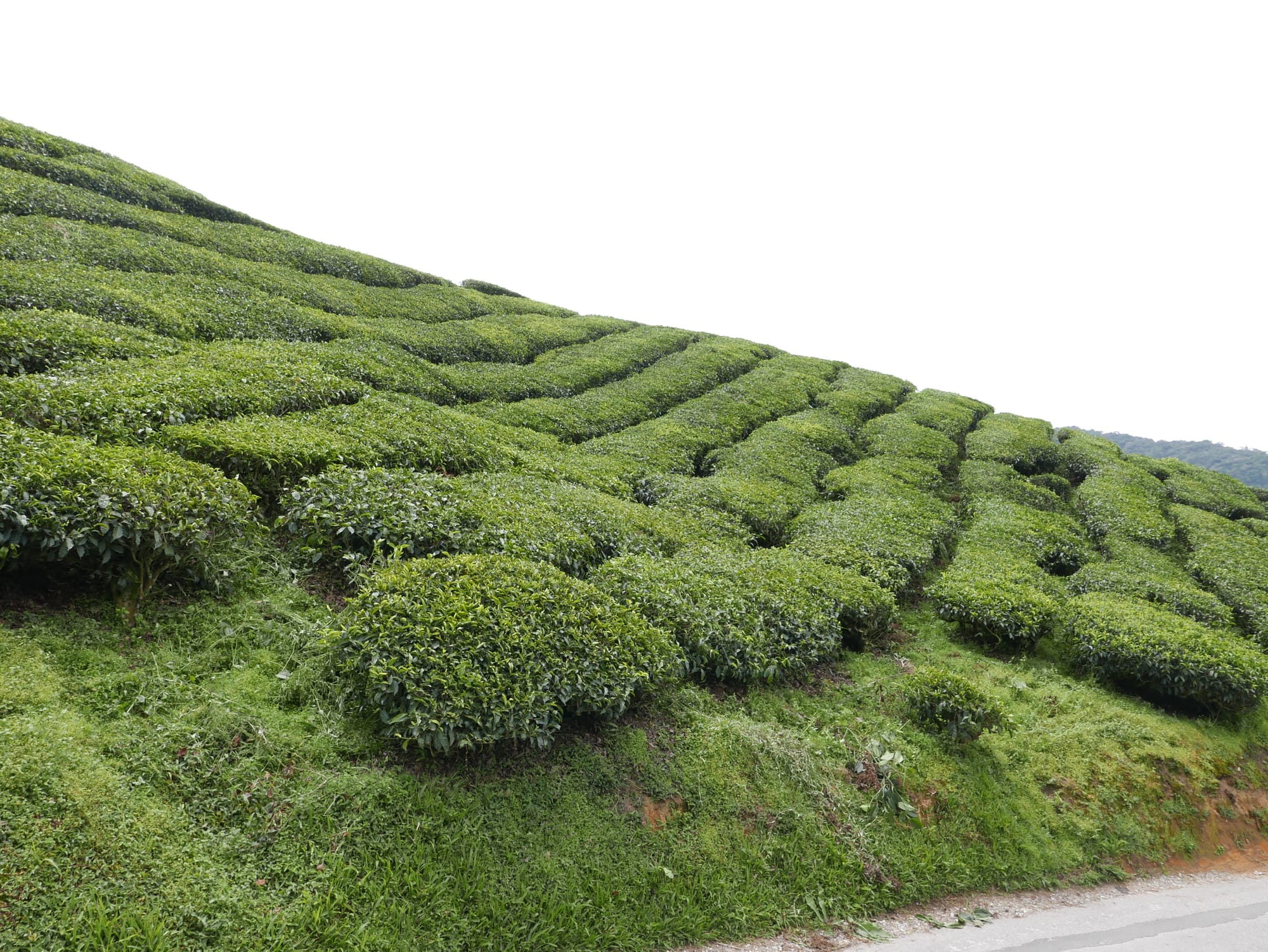
Which worryingly reminded me of the folds and patterns you see on the surface of a brain.
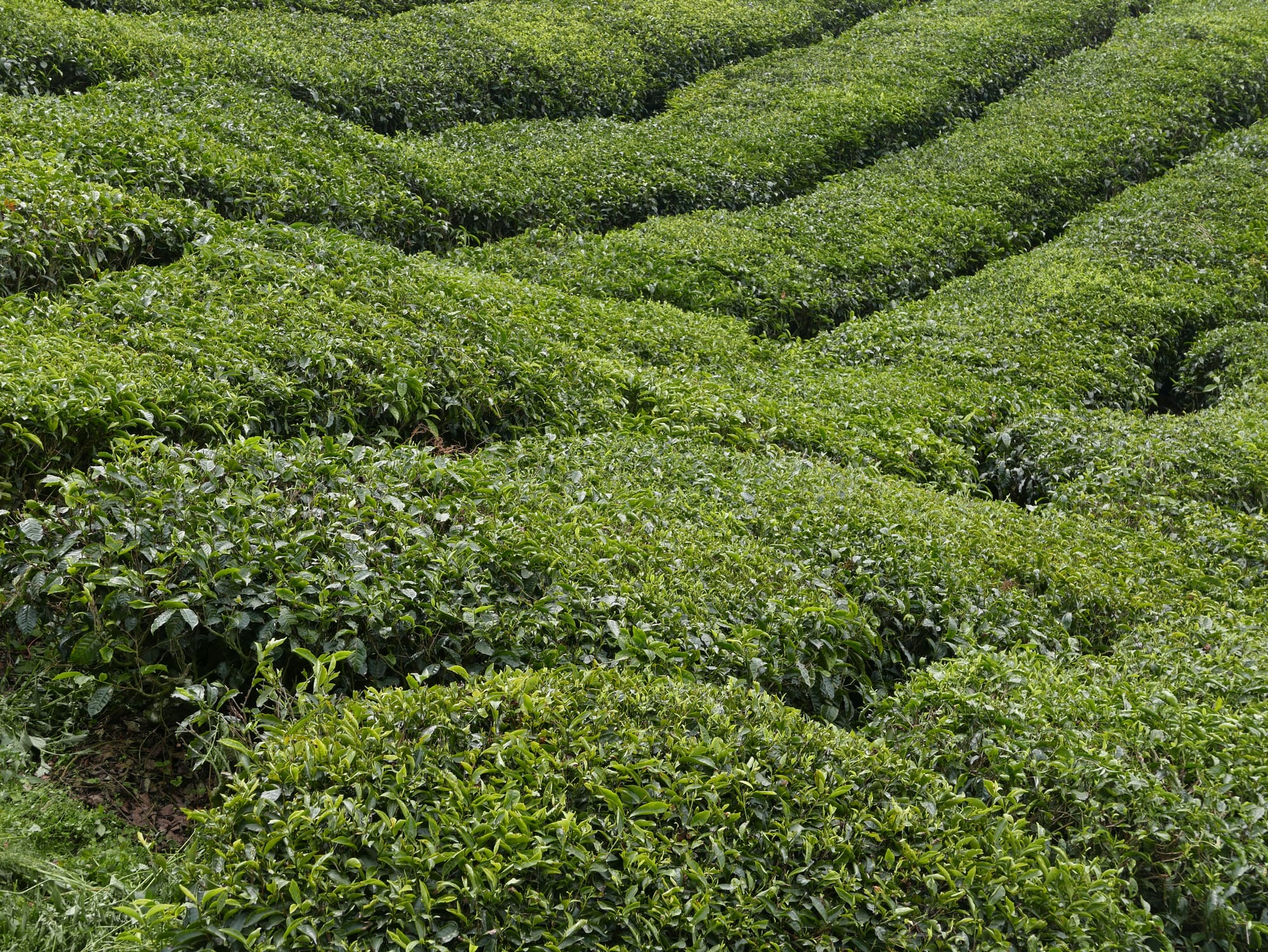
The size of the plantations amazed me. It seemed to go on forever. And while part of me was grateful that there was all this tea out there, I did wonder if all the effort and the land could be put to better use. Then again, the land used was particularly hilly, and I would guess it would not be easy to farm for other crops.
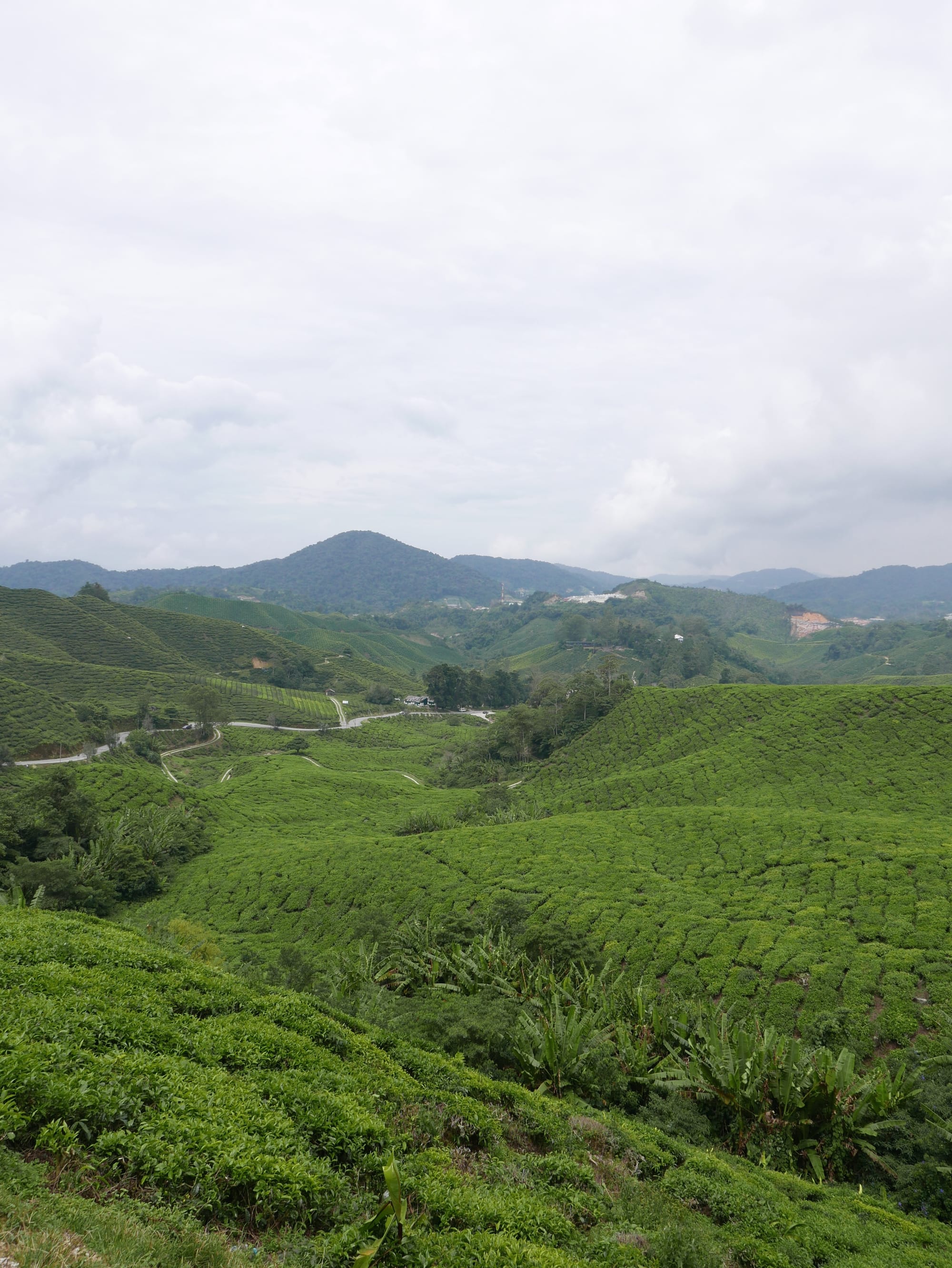
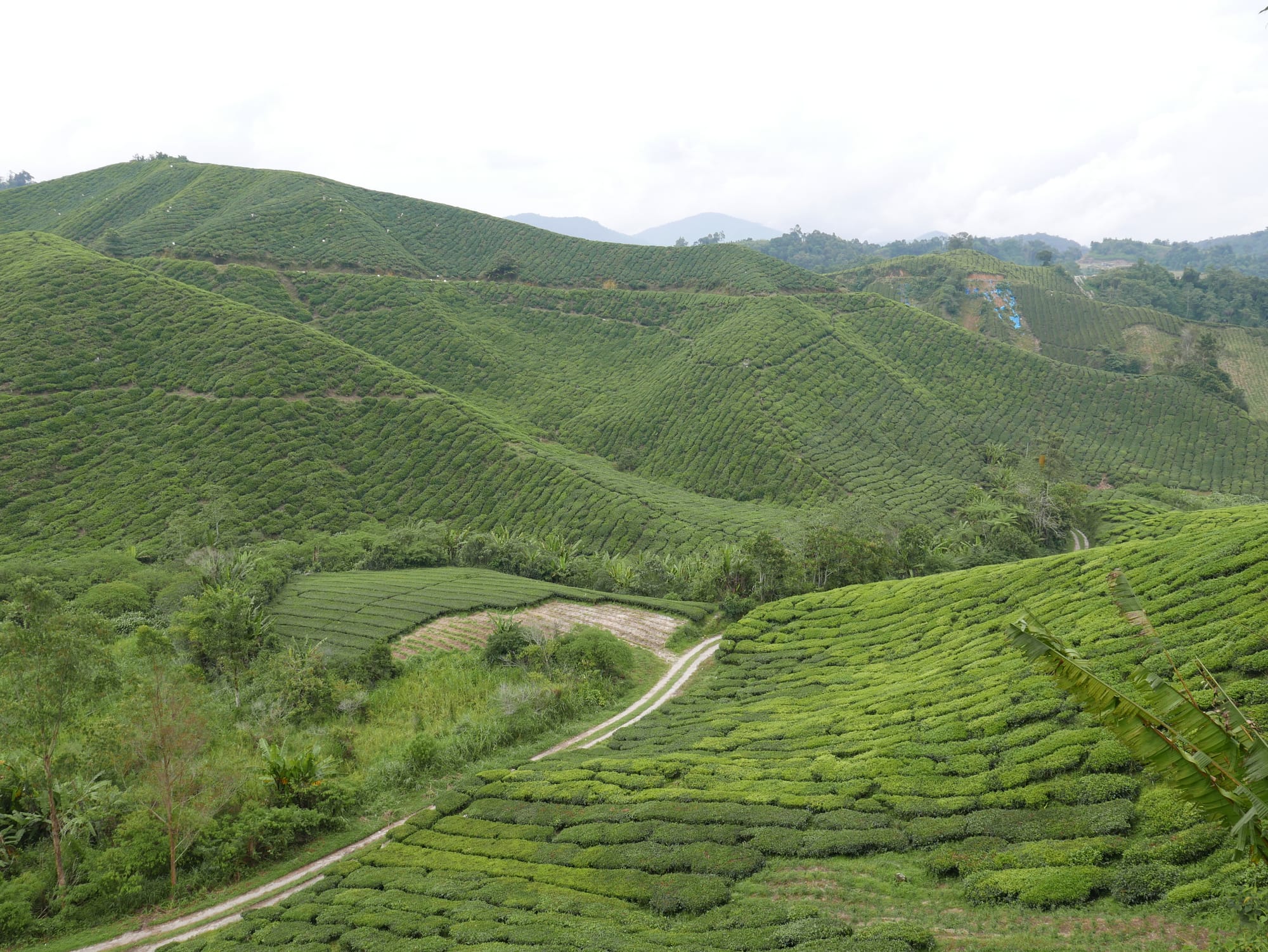
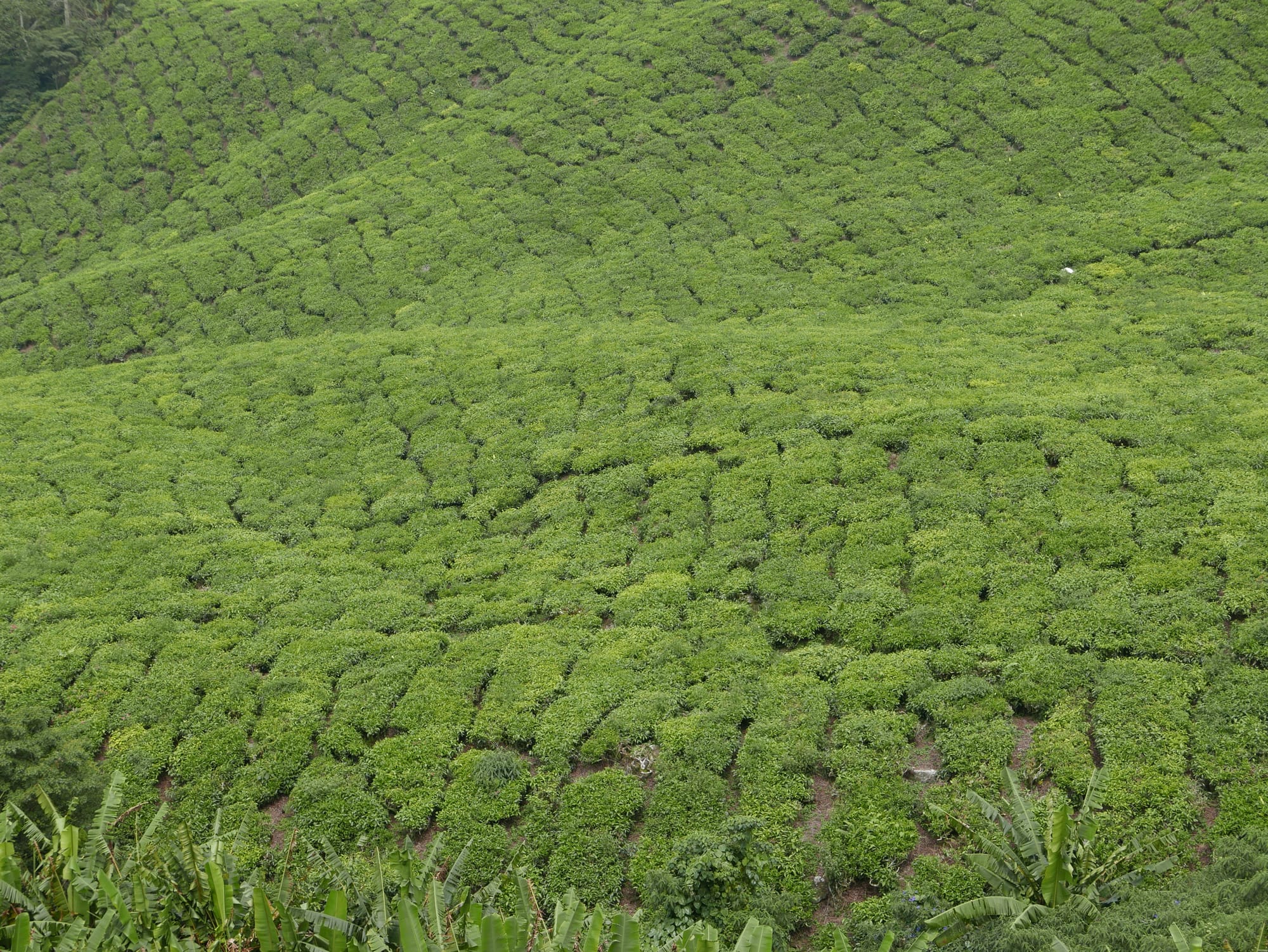
Up close, the tea plant is a bush with the bit of interest — the fresh green tea leaves — on the top. The bush will grow into a tree if the tea isn’t regularly harvested. So, it would seem that tea bushes are tea trees, not tea bushes, and the tea bush is a bit like a Bonsai tea tree.
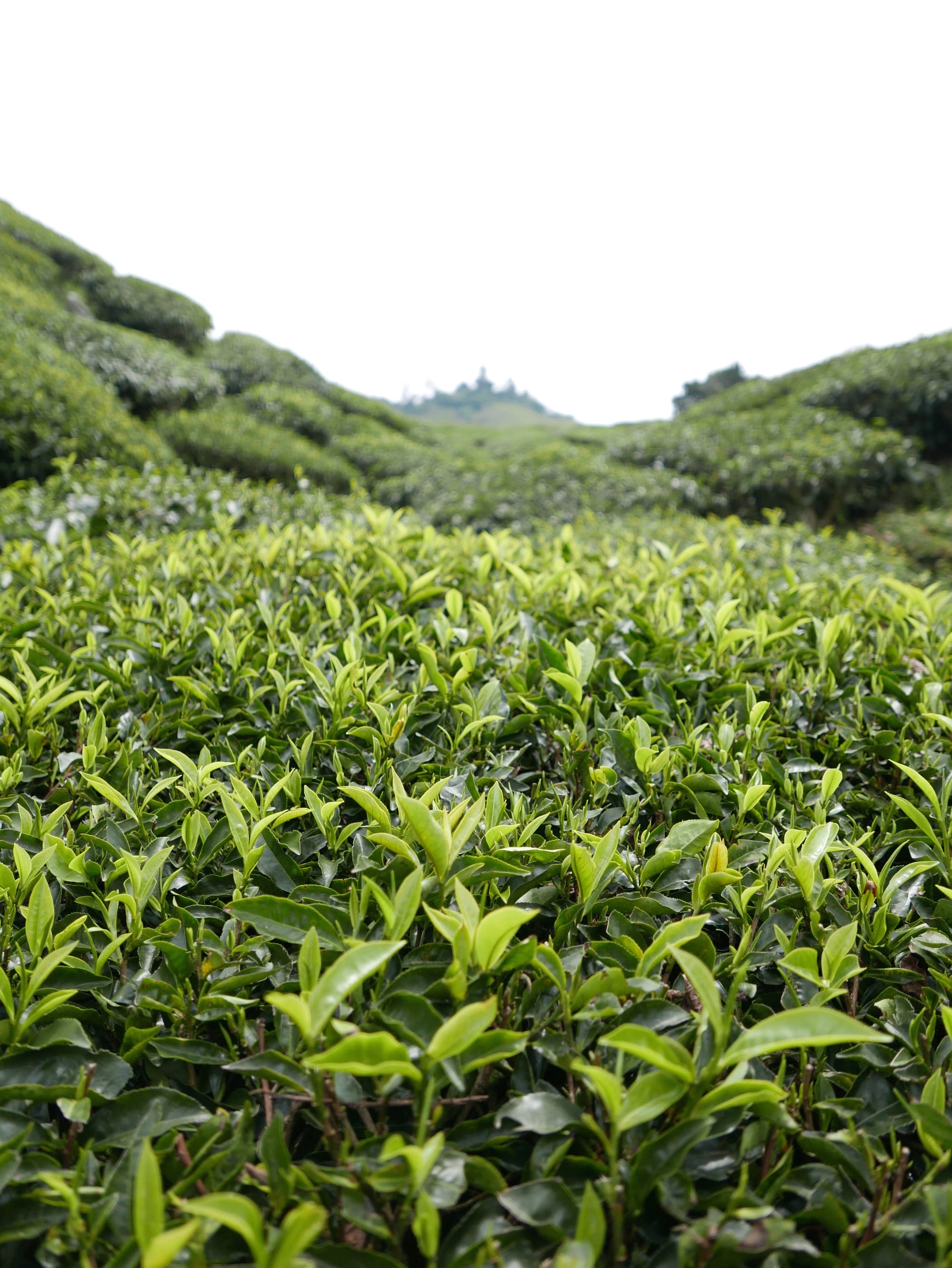
Most of the pickers at the BOH tea plantation lived on-site.
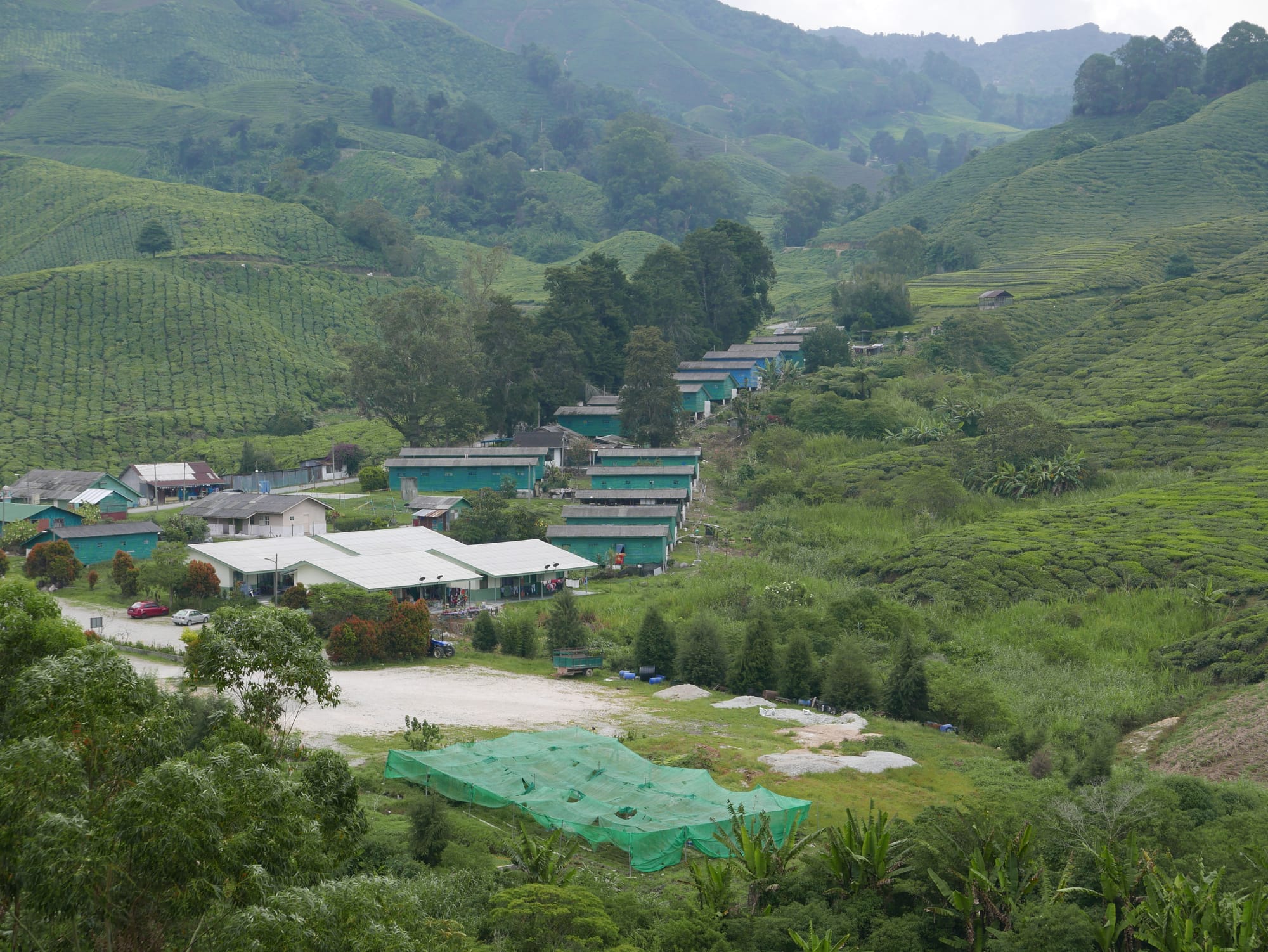
Overall, it was an educational and fascinating visit.
The cup of tea served in the onsite café was excellent, but sadly the scone was very poor.
